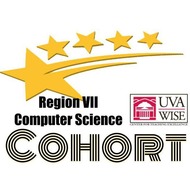
(View Complete Item Description)
The students will learn about how circuits work within a computer to not only turn the computer on, but to store/recall data, run applications, and in general respond when the mouse is clicked or a key is pressed (input/output), etc..This lesson can be created as a class with the teacher demoing what the students tell him/her/them to do or if there are enough kits students can work with partners/small groups/indivdually to create circuits and draw conclusions about how computers use circuits to operate efficiently.Suggestion: Use this link to share with students how circuits work within the computers to store and recall memory to inspire their connective learning more :) start about 3:54 until 7:19. This information will help students understand how electical currents are used to store information, but also be able to make connections with what also happens when a key is pressed or the power is turned on and electricity flows through the open circuits within the computer's operating system (hardware).Video Link: https://www.youtube.com/watch?v=0A1e8eceIsY
Material Type:
Activity/Lab,
Interactive,
Lesson,
Student Guide
Author:
Emily Ball




















